8 dark color schemes to try – designers share their favorite moody interior looks
Take inspiration from these dark color schemes to transform your home's interiors


Opting for dark color schemes in your home can be nerve-wracking. Many assume that the result will be gloomy and claustrophobic, but executing a moody color palette the right way and the overall look can be arresting, cohesive, and elegant.
'Dark colors envelope a room and make it feel squishy and comforting, wrapping you up in the biggest blanket,' says Abigail Ahern, a designer who really advocates the use of dark colors in her work. 'Saturated dark hues may force you out of your comfort zone, but you become infatuated with their ever-changing tones and what they do to the pieces in your room. Moody hues make any room instantly cosy. Everything looks cooler, taller, smarter, and edgier.'
A dark interior can make for a dramatic and unexpected look. 'The eye is trained to expect bright and light spaces,' says stylist Sarah Inch. 'When walking into a dark space, it catches you off guard and immediately draws attention to your surroundings, adding so much more interest to a room and allowing all the furnishings and decor in it to pop.'
Dark paint colors can also work to create a mood and give a room a bigger presence. 'Dark colors don’t always lead to smaller dark spaces,' explains Becky Russell of Kingston Lafferty Design. 'When combined with the right combination of textures and finishes, they quite often create cozy and calm spaces with a moody undertone.'
According to color theory rules, dark colors are those with low light intensity. We've put together eight beautiful schemes to inspire you to go dark and bold in your own home.
What to consider with dark color schemes
It's often presumed that dark color schemes make a space feel small, but by embracing size and going to the dark side, you can give a space greater gravitas despite its meager size. Also think about lighting and positioning of the room in the house - a dark scheme might work for a room that's usually in darkness. 'It may seem counterintuitive but dark colors can be a good idea for poorly lit rooms such as a north-facing room,' says Patrick O'Donnell, brand ambassador of Farrow & Ball. 'This is because you play to the limitations of natural light rather than fighting it.'
Think about the associations with certain colors, and what kind of mood you are looking to create. Green and blues are cool and can give a feeling of nature to a room. Dark reds and browns can be warming and add real comfort. Think about the qualities of color and how this will shape your interior.
The Livingetc newsletters are your inside source for what’s shaping interiors now - and what’s next. Discover trend forecasts, smart style ideas, and curated shopping inspiration that brings design to life. Subscribe today and stay ahead of the curve.
1. Inky blue

An inky dark blue is a beautiful dark and glamorous color. It can bring a feeling of calm to a space and works nicely in a bathroom as seen in this beautiful bathroom from Mitchell + Corti Architects.
'There are few spaces where you can get away with having such dark walls and bathrooms naturally lend themselves to this as they are used for small periods of time throughout the day,' explains Ester Corti.
If you're nervous about fully going dark, pair this shade of blue with a pop of bright color. 'We used dark blue with a pop of yellow to highlight the key features of this room. Dark blue and warm yellow are a classic, tried-and-tested combination, they are opposites on the color wheel and as such naturally complement each other.'
2. Dark teal

Another cool color that works well in a dark tone is a low light teal, as seen here used in a room designed by Kingston Lafferty Design. The result is both moody and sophisticated, with the monochromatic look with the paint extending onto the ceiling creating a calm and enveloping space to unwind and relax. 'The client have a light-filled contemporary family living space in the extension of the home and so we wanted this room to have a completely different feel,' explains CEO, Becky Russell.
'The rich tone of the walls was painted in a gloss finish over a rough plaster finish to prevent the result being too flat and the colour and texture continues onto the ceiling.'
Peach and oranges are colors that go with teal, and the designer has used this combination in this scheme, with accents of these tones throughout the room.
3. Black
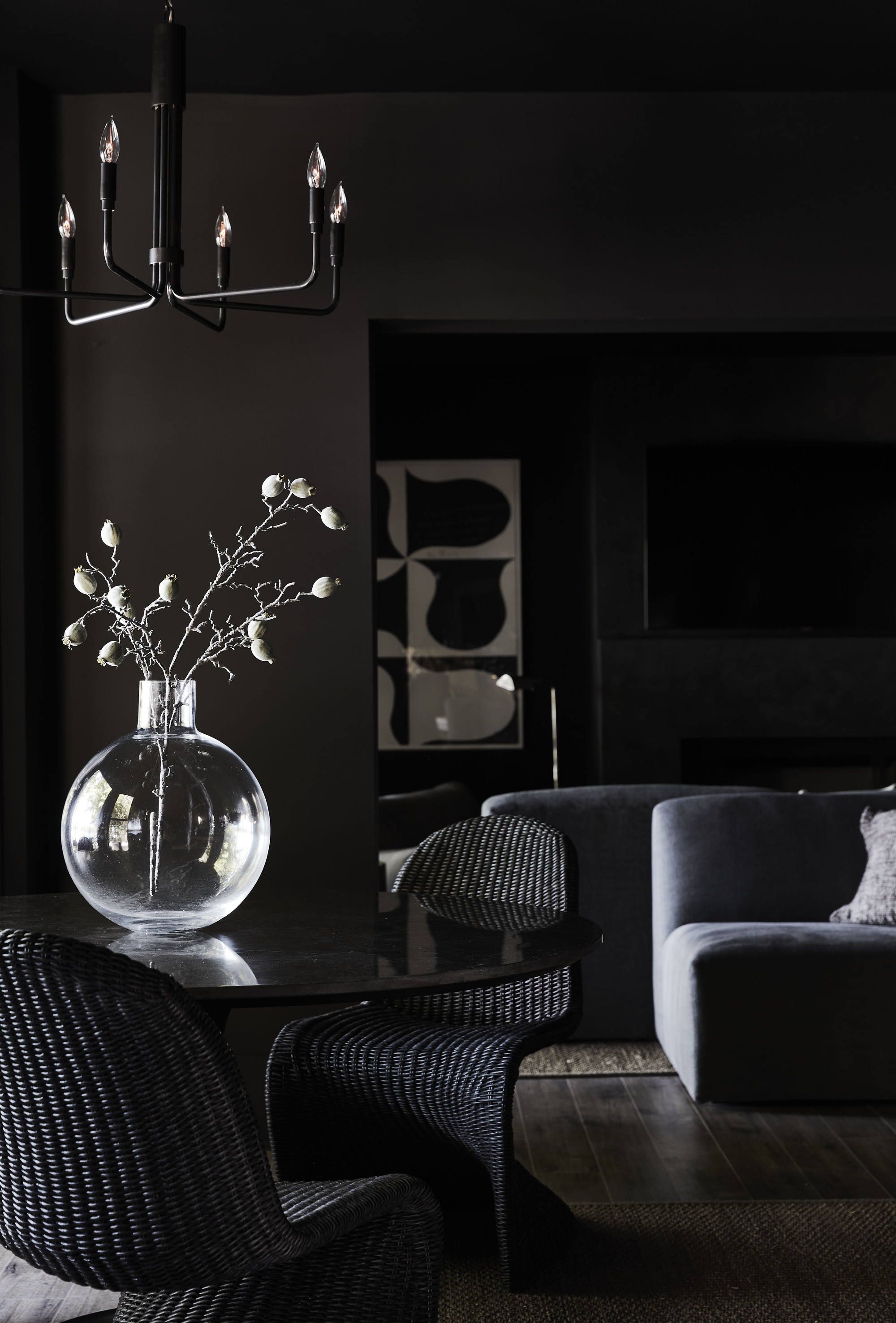
Black is a bold choice, and not to be approached by the faint-hearted, but if you're going to go for a dark scheme, why not go all out, says designer Lisa Sherry. 'A dark color scheme requires commitment, no half measures,' she says. 'I'm all in with black in this design.'
'In this lake house, the upper level is awash in white. I opted for all things black downstairs. This space is the go-to in the off-season, with the exterior blanketed in snow white.' The effect is that it's a real bold contrast and the black living room is a perfect retreat for hibernation. 'A black palette is warm and cozy, it's a great place to dig in with games and drinks near the fireplace.'
4. Burgundy
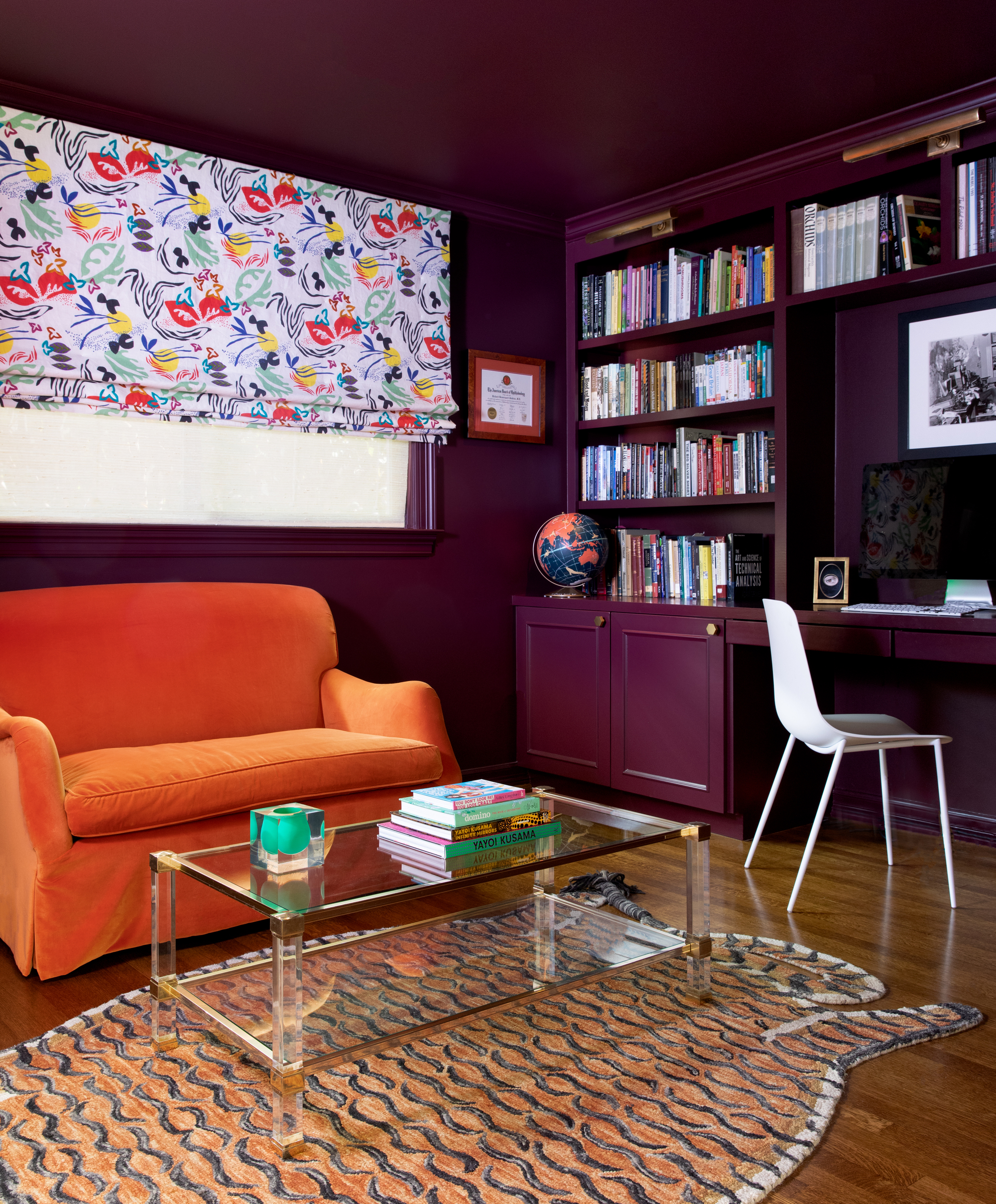
A deep burgundy is a rich color that can look great in the home and add a luxurious feel. Its warmth from underlying tones of red makes the color feel like a big warm hug when used on the walls.
This design is from Mary Patton of Mary Patton Design. 'Darker colors on walls can give the room more depth and provide a sense of sophistication,' says Mary. 'The key is to keep the furniture, fabrics and accessories a bit more bright and airy as not to weigh down the burgundy.' Here, Mary has enlisted the help of a bright orange sofa to break up the scheme as orange is one of the colors that go with burgundy.
5. Olive green
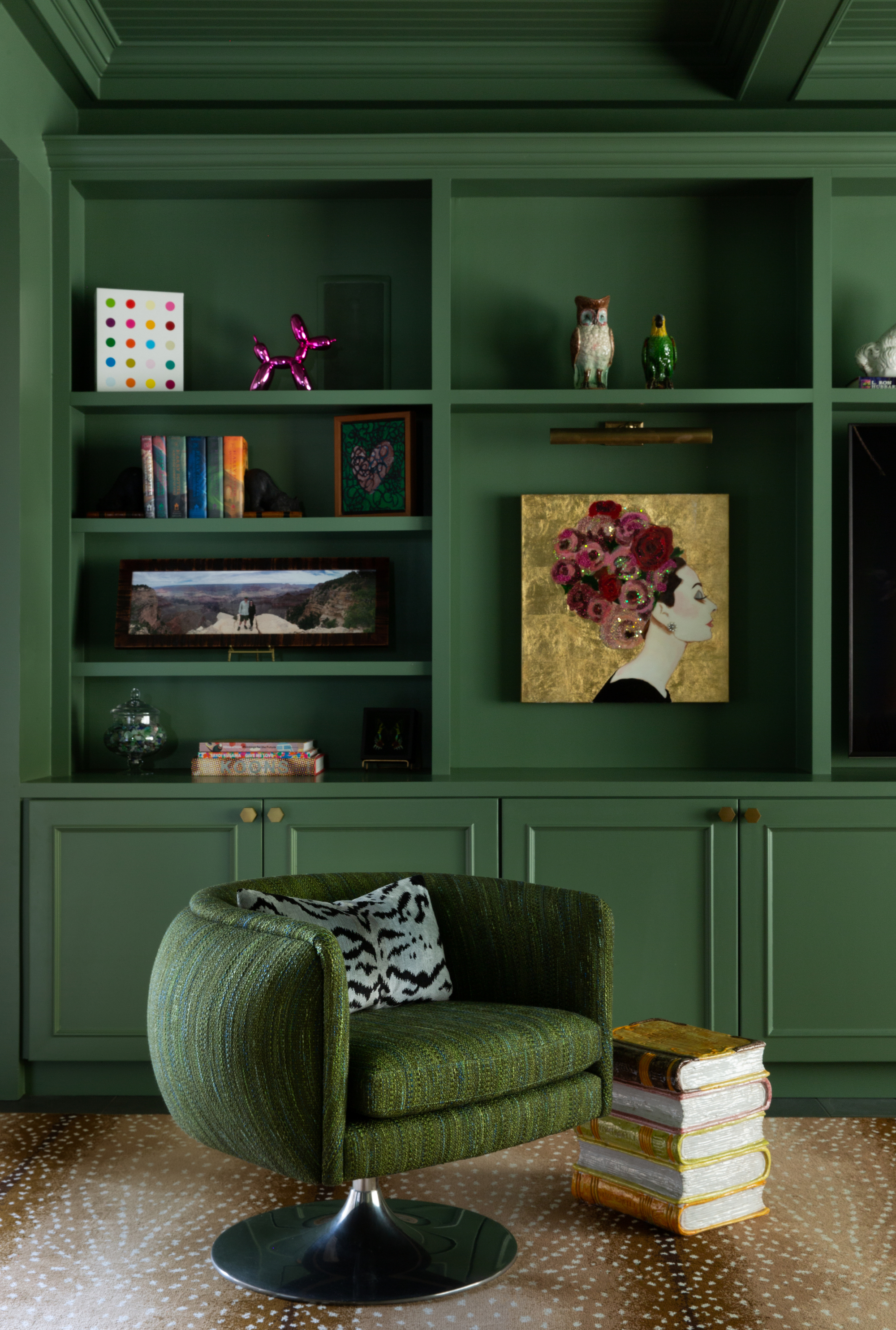
This dark and dramatic olive green scheme also from Mary Patton makes a real impact with its color-drenched walls, ceiling and furniture. Olive green is a color with strong ties to nature. It is quietly comforting and positive and can look great when painted on the walls, giving a real peaceful feel to a room. There are also lots of colors that go with olive green that make for nice accents to break up a dark olive space - from a light pink to a cream shade. 'It has a timeless quality too, and can be manipulated to create a cozy and comfortable ambiance,' says Ruth Mottershead from Little Greene. 'Olive green suits all types of homes from period properties to contemporary new builds.'
6. Grey-blue
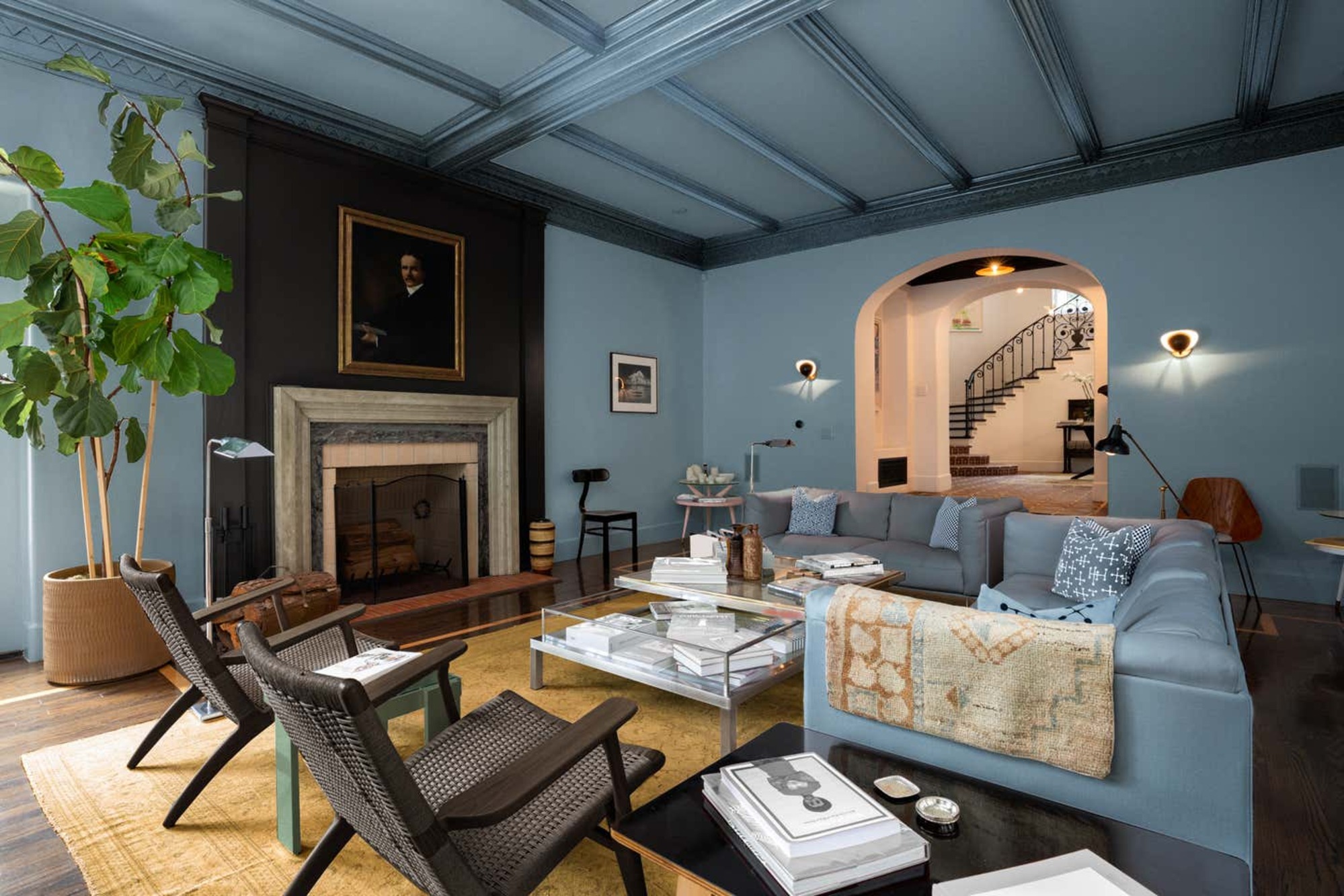
In this scheme by Brigette Romanek, a grey-blue living room creates a cool, moody feel, with cornices and the ceiling painted in the same shade for a full monochromatic color scheme and a dark feature wall to give the room a focal point.
The dark coloring reflects the purpose of this space, which is all about relaxation, and the pop of the greenery from the indoor tree keeps the interiors looking fresh instead of gloomy.
7. Brown
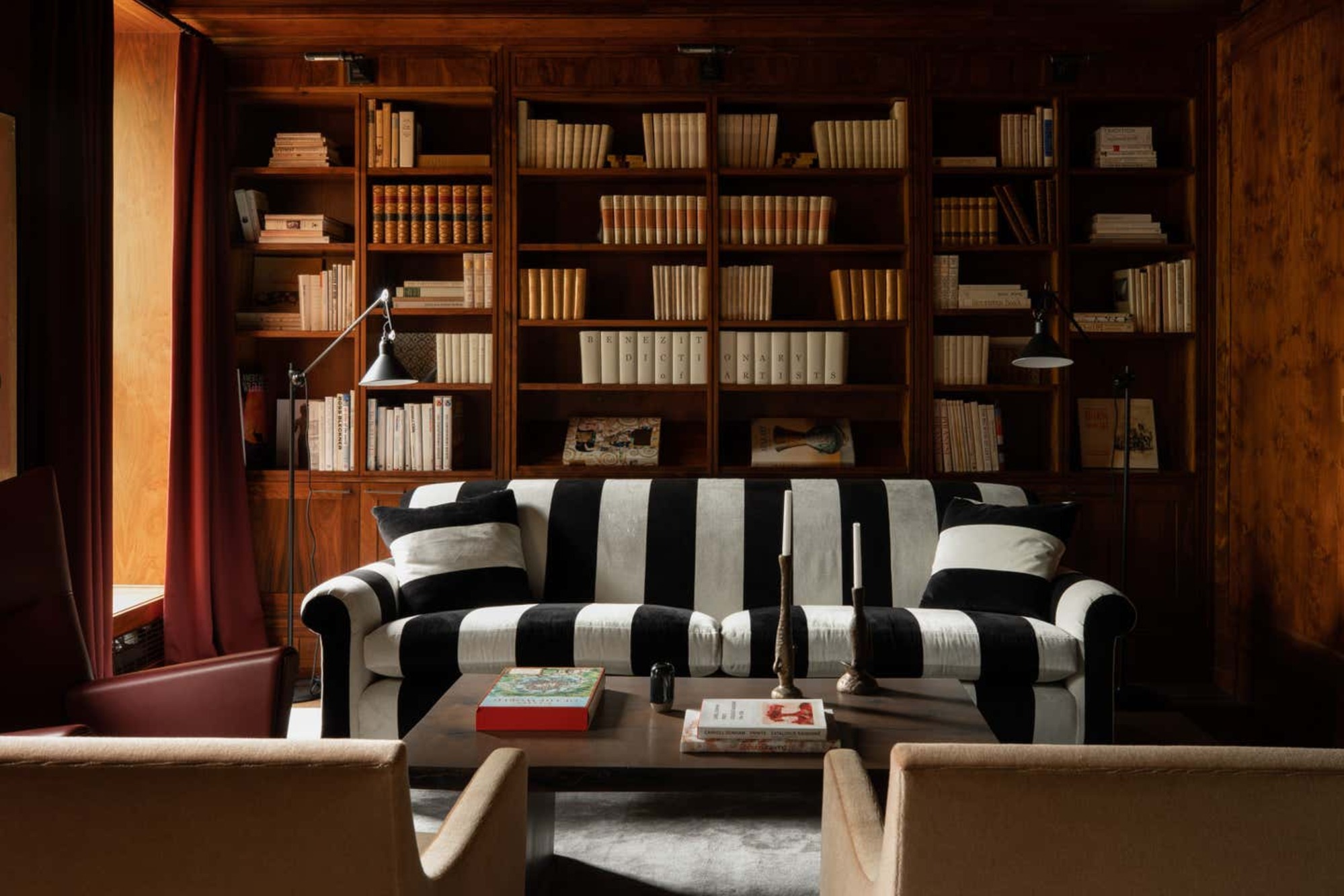
Long gone are the days when brown interiors were seen as dull and dreary. Brown has had a revamp and is now considered a warm color scheme - rich and full of stylish seventies appeal.
There is a certain depth to a brown scheme, whether that's achieved through brown paint or brown materials such as wood, as seen here in this design by Ashe Leandro. Here, the darkness of the room allows for the vertically striped sofa to really take the spotlight.
8. Light grey
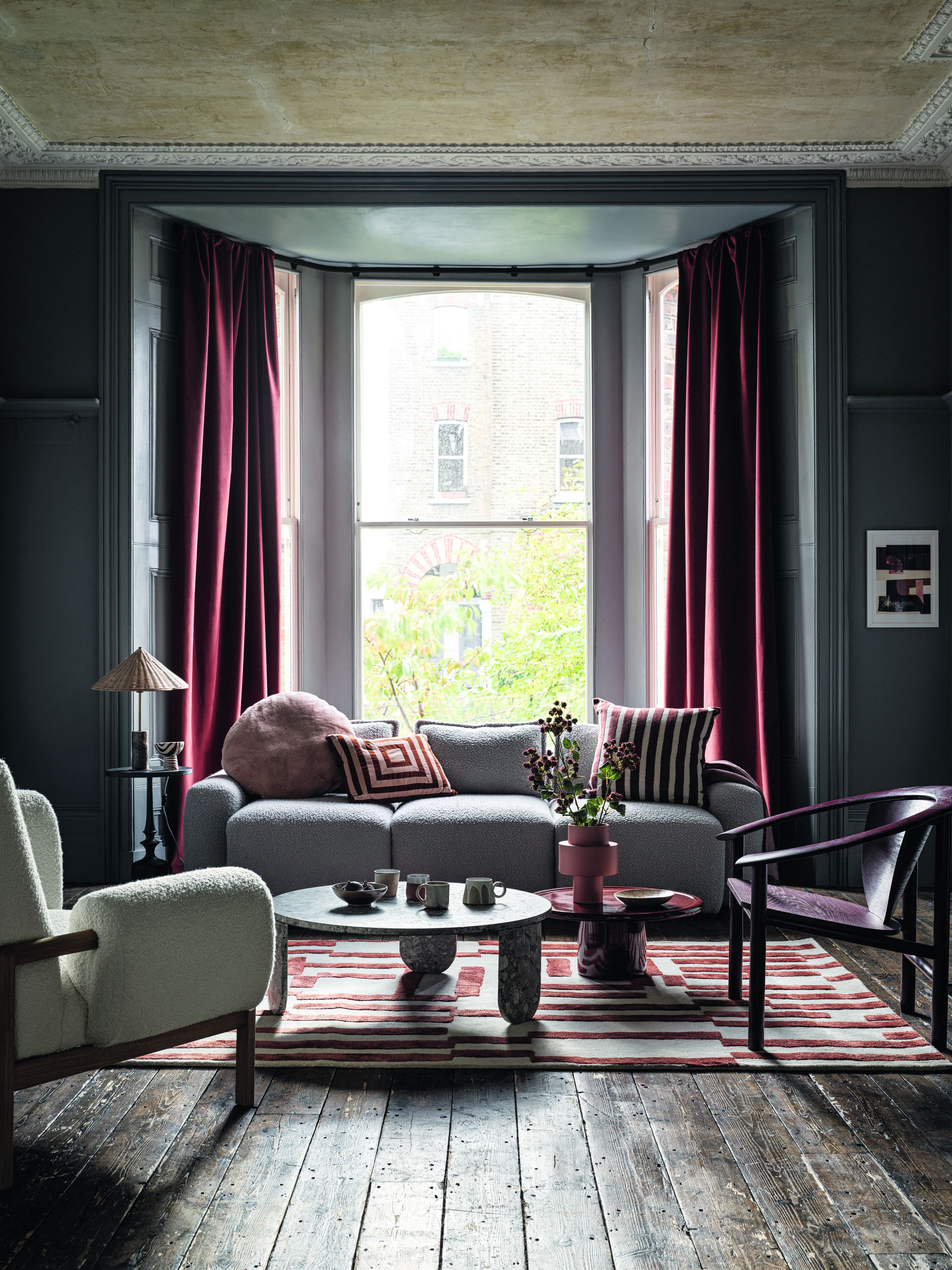
A light and ashy grey can create a feeling of moodiness and darkness in a room, even though it is a lighter hue. Grey was once ubiquitous in homes and was a staple of interior design, well-liked for its versatility and inoffensiveness. While people are experimenting more with other shades these days, it remains a steady and ever-popular choice.
Grey is used in the home as a neutral to help another contrasting color really pop, so if you're going grey on the walls, pick a stand-out color and accent pieces of furniture. Greens, pinks or even a bright yellow can really elevate the room, or break it up with a warm red, as seen in this grey living room. Consider which room of the home you use a light grey in, as it will play with light and dark, casting a shadow across the walls at different times of the day.
What rooms work for a dark color scheme?
Dark colour schemes are great for small transition spaces, such as entryways or stairways, as they are narrower and smaller spaces that merely act for movement between rooms and therefore time spent in these places is limited. Dark color schemes are also great for for TV or snug rooms. 'Something about dark colours and walls evokes a sense of intimacy, whereas bright spaces feel naturally more public and convivial,' says Ester Corti of Mitchell + Corti Architects.
Consider a bathroom for a dark color scheme, creating a feeling of luxuriousness and pampering, great for a good soak in the bath.
For designer Lisa Sherry, a dark color scheme can work anywhere in the house, 'although I'm having trouble envisioning a dark-colored nursery,' she says. 'I think almost any space can go dark, but it must have purpose. Intent should always precede decorating choices,' so carefully consider the room and what you will be using it for, how often, to help pick the dark color for you.

Former content editor at Livingetc.com, Oonagh is an expert at spotting the interior trends that are making waves in the design world. She has written a mix of everything from home tours to news, long-form features to design idea pieces, as well as having frequently been featured in the monthly print magazine. She is the go-to for design advice in the home. Previously, she worked on a London property title, producing long-read interiors features, style pages and conducting interviews with a range of famous faces from the UK interiors scene, from Kit Kemp to Robert Kime. In doing so, she has developed a keen interest in London's historical architecture and the city's distinct tastemakers paving the way in the world of interiors.